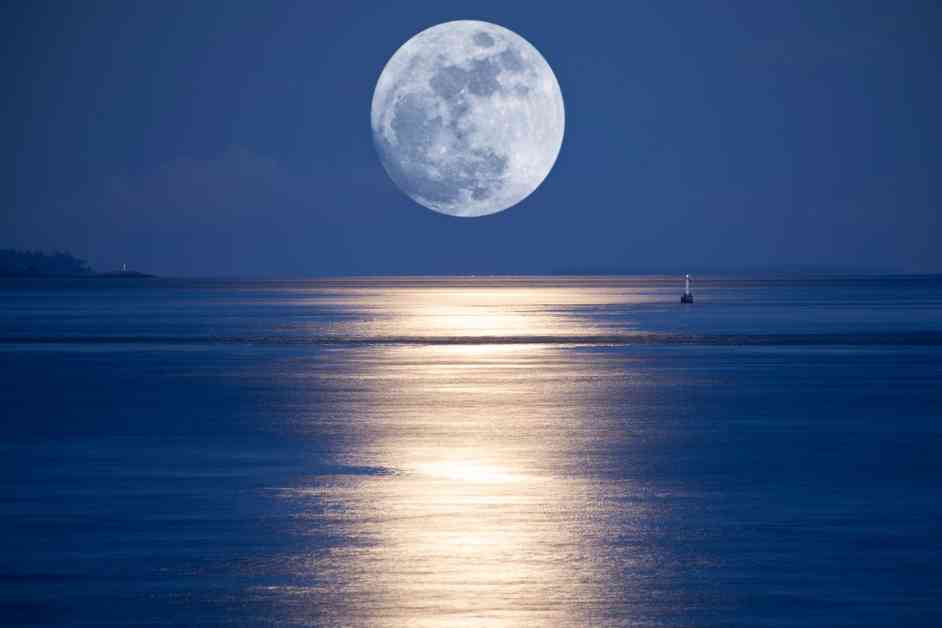I remember watching the full moon rise one early evening a while back. It was when I still lived in Colorado, and I was standing outside in my yard. I first noticed a glow to the east lighting up the flat horizon in the darkening sky, and within moments the moon was cresting above it, yellow and swollen—like, really swollenAs it cleared the horizon, the moon looked huge! It also seemed so close that I could reach out and touch it; it was so “in my face” that I felt I could fall in. I gawped at it for a moment and then smiled. I knew what I was actually seeing: the moon illusion.
Anyone who is capable of seeing the moon (or the sun) near the horizon has experienced this effect. The moon looks enormous there, far larger than it does when it’s overhead. I’m an astronomer, and I know the moon is no bigger on the horizon than at the zenith, yet I can’t not see it that way. It’s an overwhelming effect.
But it’s not real. Simple measurements of the moon show it’s essentially the same size on the horizon as when it’s overhead. This really is an illusion.
It’s been around awhile, too: the illusion is shown in cuneiform on a clay tablet from the ancient Assyrian city Nineveh that has been dated to the seventh century B.C.E. Attempts to explain it are as old as the illusion itself, and most come up short. Aristotle wrote about it, for example, attributing it to the effects of mist.
This isn’t correct, obviously; the illusion manifests even in perfectly clear weather. A related idea, still common today, is that Earth’s air acts like a lens, refracting (bending) the light from the moon and magnifying it. But we know that’s not right because the moon is measurably the same size no matter where it is in the sky. Also, examining the physics of that explanation shows that it falls short as well. In fact, while the air near the horizon does indeed act like a lens, its actual effect is to make the sun and moon look squished, like flat ovals, not to simply magnify them. So that can’t be the cause either.
Another common but mistaken explanation is that when the moon’s on the horizon, you’re subconsciously comparing it with nearby objects such as trees and buildings, making it look bigger. But that can’t be right; the illusion still occurs when the horizon is empty, such as at sea or on the plains. Also, if you’re in a city and see the moon high in the sky between buildings, it appears to be its normal size and not huge, so again, this can’t be the correct explanation.
Yet the moon does look bigger on the horizon. Experiments run in the 1950s and 1960s by cognitive psychologists Irvin Rock and the late Lloyd Kaufman (who died just this past August) showed that people perceive the moon to be much larger on the horizon— sometimes as much as three times bigger than when it’s overhead. If the visual cues to the position of the moon go away, however, the illusion vanishes. Looking at it through a paper towel tube, for example, makes it look the same size no matter where in the sky it is.
So what’s the cause? Like so many things in science, there are two effects at play here.
One is the Ponzo illusion (not to be confused with a Ponzi scheme, which is a financial illusion). It’s a very simple yet overwhelming illusion. In its simplest forms, two parallel horizontal lines of equal length (like an equal sign) are placed between two lines that are nearly vertical but converge slightly near the top. Now look at the horizontal lines: the top one appears longer, even though they’re the same length! It’s almost impossible not to see them as unequal.
Variations abound, but all rely on tricking the brain using perspective. We interpret the two nearly vertical lines not as leaning toward each other but instead as parallel yet converging in the distance, like railroad tracks. This perception, in which lines in two-dimensional space appear to meet at a point called the vanishing point, is often used in art to portray relative distances.










